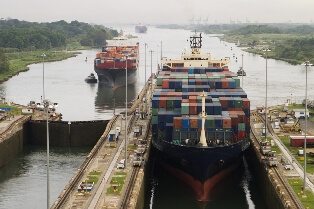West Coast Port Disruptions: A Costly Impact
The ILWU strike disrupted operations at major West Coast ports for nine months, causing billions in economic losses. Retailers like Walmart and Gap faced inventory shortages, while companies such as Perry Ellis and Ann Taylor reported millions in shipping-related costs. These delays didn’t just affect businesses—consumers also felt the impact as companies passed losses down the supply chain.
Why Shippers Are Seeking Alternatives
Due to ongoing concerns about reliability, many shippers now explore West Coast port alternatives. Past disputes, like the one in 2002, led to permanent cargo diversions. Today, companies prefer to avoid the risk of future supply chain interruptions by rerouting freight through the Panama Canal and Gulf Coast ports.
Long-Term Effects of Port Disputes
Port disruptions often trigger lasting changes in shipping behavior. During the 2002 strike, diverted cargo never returned to West Coast ports. Now, shippers hesitate to rely on these ports again. Recent data shows container volumes in Los Angeles, Long Beach, and Seattle-Tacoma dropped by 29%, 18%, and 13%, respectively.
The Rise of Gulf Coast and Panama Canal Routes
To maintain supply chain stability, shippers increasingly choose Panama Canal shipping routes and Gulf Coast ports. These alternatives offer improved infrastructure, better reliability, and growing capacity.
Panama Canal Expansion: Third Set of Locks Project
The Panama Canal Authority launched the Third Set of Locks Project to double canal capacity. This initiative includes new lock chambers, water reutilization basins, and deeper navigation channels. These upgrades allow larger vessels to pass through, making the canal a strategic route for global freight.
Gulf Coast Port Improvements
Ports across the Gulf Coast—such as Houston, New Orleans, and Mobile—have invested heavily in infrastructure. New Orleans added a near-dock intermodal rail terminal and a refrigerated container system for over 600 units. Houston plans to expand its facilities to accommodate larger ships and increased container traffic.
Economic Impact of Cargo Diversions
Cargo diversions already affect the local economy. A recent JOC survey revealed that 18.3% of shippers plan to reroute up to 10% of their cargo, while 22.7% expect to divert up to 30%. These shifts benefit Gulf Coast states and reduce dependence on volatile West Coast operations.
What This Means for Freight Services and Trucking Companies
As container volumes grow in Gulf Coast ports, local trucking companies stand to gain. Increased demand for drayage, LTL freight services, and flatbed trucking creates new opportunities for logistics providers.
Opportunities for LTL and Truckload Shipping
Businesses now require reliable LTL and truckload shipping options to move cargo from Gulf Coast ports to inland destinations. Freight companies that offer flexible, cost-effective solutions will play a key role in supporting this transition.
Flatbed Trucking for Oversized Cargo
For oversized or irregularly shaped shipments, flatbed trucking services provide the ideal solution. These trucks simplify loading and unloading while ensuring safe transport for machinery and industrial equipment.
Consult Freight-Specialist for Reliable Shipping Solutions
Freight-Specialist helps businesses navigate the changing freight landscape. Whether you’re rerouting cargo from West Coast ports or planning shipments through the Panama Canal, our team offers expert guidance on freight class, container logistics, and port-to-destination trucking. Contact us today to ensure your cargo moves safely and efficiently.





